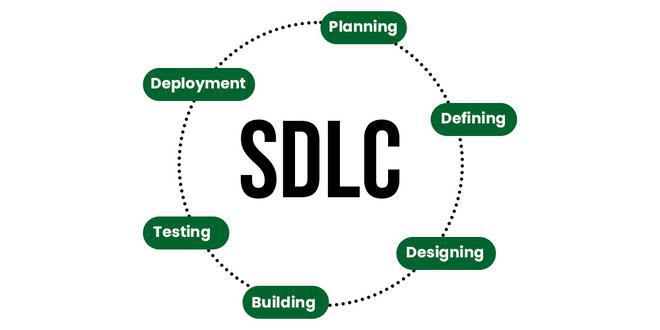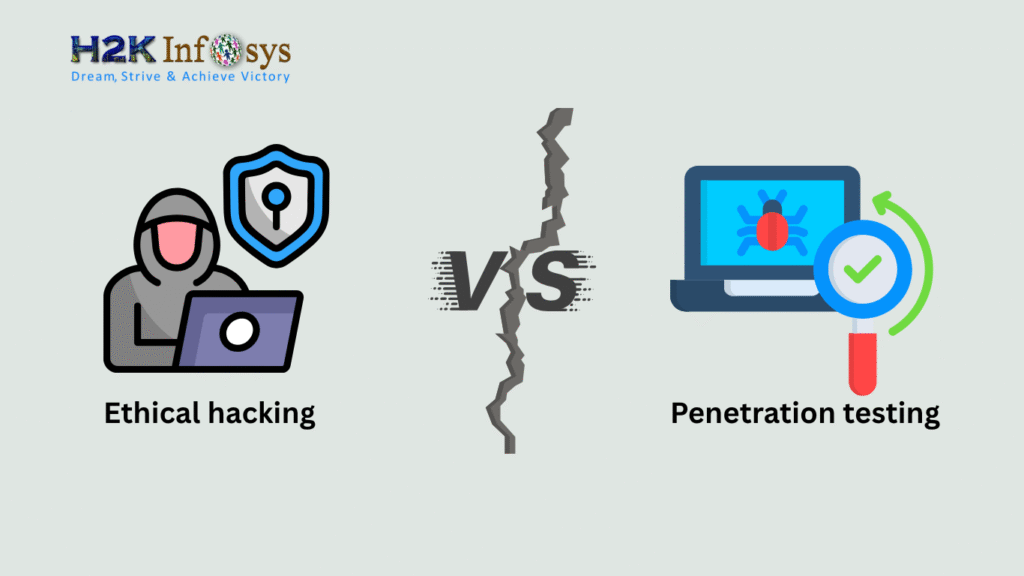Introduction
Software testing is an essential phase of the software development lifecycle (SDLC) that ensures the quality, functionality, and security of the product before it is released to the end users. In today’s rapidly evolving technological landscape, software testing plays a crucial role in delivering reliable and high-performing applications. This blog will explore the importance of software testing, highlighting its benefits, types, and the impact it has on overall software quality.
There are many reasons that make software testing important:
- Software testing is essential to notice the defects and errors which may occur during the development phases.
- Software testing is important since it verifies the customer’s reliability and their content with application.
- The software testing is very important to test the quality of the product and the good quality product supplied to their customer helps to gain the confidence.
- Testing is necessary when you give the facilities to the customers like delivery of high quality product or software application which requires minimal maintenance cost and gives good results and precise results.
- Software testing has to be carried out because it gives effective performance of the software application.
- It makes sure that the application should not result into any failures because it may lead into extra expenses.
- It is necessary to stay in the business.

Thoroughly tested software ensures reliable and high-quality performance in software operation. Testing contributes significantly to the success of an overall project. Involvement of testers in requirement reviews and user story refinement allows for early identification of defects before implementation, reducing fixing costs. Testers collaborate with system designers, increasing their understanding of each part of the design. They also work closely with developers, enhancing their grasp of the code. With this knowledge, testers verify and validate the software before launch, detecting errors that might otherwise go unnoticed. For those interested in this field, Software tester courses online provide an excellent starting point to build essential skills.
Software testing is a vital process in the software development lifecycle, ensuring that applications meet quality standards and function as intended. It helps identify defects, improves user satisfaction, and contributes to the overall success of a project. Below, we delve into the key reasons why software testing is indispensable.
1. Ensures Software Quality
The primary goal of software testing is to ensure the quality of the application. Testing verifies that the software meets the specified requirements, functions correctly, and delivers a seamless user experience. High-quality software enhances customer trust and brand reputation.
2. Detects and Fixes Bugs Early
Testing identifies errors and defects in the early stages of development. Early detection reduces the cost and effort required for fixes. This proactive approach prevents critical issues from escalating during later stages or post-deployment.
3. Validates User Requirements
Software testing ensures that the product aligns with user needs and expectations. By validating user stories and requirements, testers help developers deliver a product that meets customer demands, increasing satisfaction and adoption rates.
4. Improves Security
With the rise of cyber threats, security testing has become crucial. It identifies vulnerabilities, safeguards sensitive data, and ensures the application complies with security standards. This builds trust among users and protects against potential breaches.
5. Enhances Application Performance
Performance testing evaluates an application’s speed, scalability, and stability under various conditions. This helps ensure that the software can handle high traffic, complex operations, and challenging scenarios without failure.
6. Reduces Development Costs
Defects identified during early testing phases are cheaper to fix compared to issues discovered later in production. Testing minimizes rework, optimizes resource usage, and contributes to cost efficiency in software projects.
7. Supports Continuous Delivery and Integration
In Agile and DevOps environments, testing is integral to continuous delivery and integration processes. Automated testing enables frequent releases and faster feedback, ensuring that updates and new features meet quality benchmarks.
8. Ensures Compatibility
Software testing validates compatibility across different platforms, browsers, and devices. This ensures that users experience consistent functionality, regardless of the environment.
9. Fosters Team Collaboration
Testing fosters collaboration between QA testers, developers, and other stakeholders. By working together to identify and address issues, the team delivers a product that meets quality standards and user expectations.
10. Boosts User Satisfaction
Reliable, error-free software leads to a better user experience. Satisfied users are more likely to recommend and continue using the product, driving customer loyalty and business growth.
Software Testing Througout SDLC:
Software development step is divided into several logical stages which allow the company to arrange systematically its work, efficiently build a product of required functionality within a specific time frame and budget.

Testing is one of the critical processes of the software development process life cycle. It helps the companies to perform a comprehensive assessment of software and ensure that their product fulfils the client’s needs. The testing phases of the software development lifecycle help to identify all errors and bugs of any software to companies before it is implemented. If the software bugs are not solved or fixed before deployment they badly affect the client’s business.
The role of testing in software development is significant the procedure help software teams in verifying the functional and non-functional features and requirements of projects. The cost of removing or fixing bugs is minimal when compared with later stages of development, if the bugs are spotted at the early stage of the project. The quality of the product says for itself and users can identify the quality and experience. Not only can testing invoke greater engagement from users, but it can also reduce the overall development and maintenance cost of the project.
IT TEAMS AND ROLES:
There are different roles in software testing team. The software testing is performed at every level of software development with specific objective and IT professionals. This makes sure early defect detection and fixing. It is important to make sure that the software testing team should have a proper structure. The roles and responsibilities should be clearly defined and properly distributed among the team members. Each and every member of the team will have a proper document that provides the necessary information on how task would be organised, what approach will be followed, how things should be scheduled and how many hours have been allocated to each member and all details related to applicable standards and quality process.
Role of a tester:
A tester is responsible for designing the testing scenarios, for conducting the tests and analyse the outcome or results after observations submit the report to the development team. A software tester should have the knowledge about software testing. Testers should have the good understanding about the system which means technical and functional product aspects.
In the dynamic world of software development, the role of a tester is indispensable. Testers act as the quality gatekeepers, ensuring that every application meets the required standards before it reaches the end user. Let’s delve deeper into the multifaceted responsibilities of a software tester.
1. Understanding Requirements
Testers begin by thoroughly analyzing the project requirements. They work closely with business analysts and stakeholders to gain a clear understanding of:
- Functional and non-functional requirements.
- User stories and acceptance criteria.
This step ensures they align testing goals with project objectives.
2. Designing Test Cases
Creating detailed and comprehensive test cases is a primary responsibility. Testers design scenarios that cover:
- Positive and negative paths.
- Edge cases and boundary conditions.
- Usability and performance metrics.
These test cases form the blueprint for the testing process.
3. Executing Test Cases
Once test cases are ready, testers execute them meticulously. This involves:
- Testing functionality, performance, and security.
- Validating integrations and data flows.
- Recording results and identifying deviations.
4. Identifying and Reporting Bugs
Detecting and documenting defects is a core activity. Testers use bug-tracking tools to:
- Record detailed descriptions of issues.
- Assign severity and priority levels to bugs.
- Collaborate with developers to resolve problems.
5. Regression Testing
When developers fix bugs or add new features, testers perform regression testing to:
- Ensure previous functionalities remain unaffected.
- Verify the stability of the application post-changes.
6. Collaboration and Communication
A tester works closely with multiple teams, including developers, designers, and stakeholders. Their effective communication ensures:
- Seamless handoff of feedback.
- Clarification of requirements.
- Alignment of testing efforts with project timelines.
7. Automation Testing (Optional)
In projects requiring high efficiency, testers often:
- Write and execute scripts for automated test cases.
- Leverage tools like Selenium, JUnit, or TestNG for repetitive tasks.
- Reduce manual effort while improving accuracy.
8. Ensuring User Satisfaction
Ultimately, testers aim to ensure the final product meets user expectations. Their focus on usability and reliability:
- Enhances customer satisfaction.
- Builds trust and credibility in the product.
Software test manager:

The test manger represents the leader of the testing team. Test manager will be responsible for interdepartmental meetings. This role has a responsibility of making decisions regarding the test environment required and how the information flow will be managed and how the testing procedure will go hand in hand with development.
Software automation tester:
Software automation tester role can be handled by an automated test engineer who should have a very good understanding of GUI designs, load or stress testing. He should know the requirement and design test procedures and test cases for automated software testing. He should design automated test scripts that are reusable. He should make sure that automated testing related activities are done as per the company standards.
By writing scripts and maintaining automated frameworks, they streamline the testing process, reduce time-to-market, and improve overall efficiency. Automation testers collaborate closely with developers and QA teams, ensuring seamless integration of automated tests into the development pipeline. For those looking to excel in this dynamic field, training in tools like Selenium, JUnit, and TestNG is essential, offering a pathway to expertise and career growth.
Conclusion
The importance of software testing cannot be overstated. It is a vital process that ensures software quality, security, performance, and compliance with standards. By identifying and resolving defects early, testing saves costs, enhances user experience, and builds trust among users. In a world where software failures can have severe consequences, investing in thorough and continuous testing is not just an option but a necessity for delivering successful software products.
Software testing is an indispensable part of the software development lifecycle. It ensures that applications are reliable, functional, secure, and aligned with user expectations. By identifying defects early, improving performance, and validating requirements, testing contributes to the success of software projects while reducing costs and risks. In an era where user satisfaction and data security are paramount, the role of testing has become more critical than ever.
Ready to make your mark in the world of software testing?
Enroll in a QA certification for beginners with H2K Infosys to gain practical skills and expertise. Our industry-driven programs are designed to prepare you for real-world challenges in software testing.
Start your journey today with H2K Infosys and become a driving force behind high-quality software solutions!
























8 Responses
Software development step is divided into several logical stages which allow the company to arrange systematically its work, efficiently build a product of required functionality within a specific time frame and budget. There are different roles in software testing team. The software testing is performed at every level of software development with specific objective and IT professionals. This makes sure early defect detection and fixing. A tester is responsible for designing the testing scenarios, for conducting the tests and analyze the outcome or results after observations submit the report to the development team. The test manger represents the leader of the testing team. Test manager will be responsible for interdepartmental meetings. Software automation tester role can be handled by an automated test engineer who should have a very good understanding of GUI designs, load or stress testing.
Importance of Software Testing
It is important to notice the defects and errors that may occur during the development phase. It verifies the customer’s reliability with the content of the given application. To ensure that the quality and the delivery of the content is the way the client wants, it is important to test the software that can provide confidence and could lower maintenance cost whilst also giving good/precise results. The performance of the software application can be determined through testing, and should not result in any failures otherwise could lead to extra expenses. These are the reasons why it is necessary to make sure to test software because it helps stay in business. Testing is one of the critical processes of the SDLC.
IT Team and Roles: Each and every member will be allocated to a specific task given based on a test plan which is worked on with many other IT professionals.
Role of a tester: a tester is responsible for designing the testing scenarios, for conducting the tests and analyzing the outcome or results after observations submit the report to the development team.
Software test manager: The test manager represents the leader of the testing team. Test manager will be responsible for interdepartmental meetings.
Software automation tester: Software automation tester role can be handled by an automated test engineer who should have a very good understanding of GUI designs, load or stress testing. They should know the requirement and design test procedures and test cases for automated software testing.
This article is about importance of Software Testing which is to notice the defects and errors that may occur during the development phase. It verifies the customer’s reliability with the content of the given application. To ensure that the quality and the delivery of the content is the way the client wants, it is important to test the software that can provide confidence and could lower maintenance cost whilst also giving good/precise results. The performance of the software application can be determined through testing, and should not result in any failures otherwise could lead to extra expenses. These are the reasons why it is necessary to make sure to test software because it helps stay in business. Testing is one of the critical processes of the SDLC.
IT Team and Roles:
Each and every member will be allocated to a specific task given based on a test plan which is worked on with many other IT professionals.
Role of a tester:
a tester is responsible for designing the testing scenarios, for conducting the tests and analyzing the outcome or results after observations submit the report to the development team.
Software test manager:
The test manager represents the leader of the testing team. Test manager will be responsible for interdepartmental meetings.
Software automation tester:
Software automation tester role can be handled by an automated test engineer who should have a very good understanding of GUI designs, load or stress testing. They should know the requirement and design test procedures and test cases for automated software testing.
Testing is a process or steps of a software items analyzing in order to detect the state of disagreement between actual and required / expected conditions.
There are many reasons that make software testing important:
Software testing is essential to notice the defects and errors which may occur during the development phases.
Software testing is important since it verifies the customer’s reliability and their content with application.
The software testing is very important to test the quality of the product and the good quality product supplied to their customer helps to gain the confidence.
Testing is necessary when you give the facilities to the customers like delivery of high quality product or software application which requires minimal maintenance cost and gives good results and precise results.
Software testing has to be carried out because it gives effective performance of the software application.
It makes sure that the application should not result into any failures because it may lead into extra expenses.
It is necessary to stay in the business.
Role of a tester:
a tester is responsible for designing the testing scenarios, for conducting the tests and analyzing the outcome or results after observations submit the report to the development team.
Software test manager:
The test manager represents the leader of the testing team. Test manager will be responsible for interdepartmental meetings.
Software automation tester:
Software automation tester role can be handled by an automated test engineer who should have a very good understanding of GUI designs, load or stress testing. They should know the requirement and design test procedures and test cases for automated software testing.
Importance of software testing:
The software testing is important because:
1. It detects defects and errors which may occurs during development phase.
2. It delivers high quality product to customer
3.It verifies the customer reliability.
3. It gives effective performance of software.
4. It makes sure that software should not fails , it may result in high expenses
5. It is important to stay in business.
IT teams and roles
Software testers :
A software tester should have the knowledge about software testing. Testers should have the good understanding about the system which means technical and functional product aspects.
Test manager :
The test manger represents the leader of the testing team. Test manager will be responsible for interdepartmental meetings. This role has a responsibility of making decisions regarding the test environment required and how the information flow will be managed and how the testing procedure will go hand in hand with development.
Automation tester:
an automated test engineer who should have a very good understanding of GUI designs, load or stress testing. He should know the requirement and design test procedures and test cases for automated software testing. He should design automated test scripts that are reusable. He should make sure that automated testing related activities are done as per the company standards.
This article is about importance of Software Testing which is to notice the defects and errors that may occur during the development phase. It verifies the customer’s reliability with the content of the given application. To ensure that the quality and the delivery of the content is the way the client wants, it is important to test the software that can provide confidence and could lower maintenance cost whilst also giving good/precise results. The performance of the software application can be determined through testing, and should not result in any failures otherwise could lead to extra expenses. These are the reasons why it is necessary to make sure to test software because it helps stay in business. Testing is one of the critical processes of the SDLC.
IT Team and Roles:
Each and every member will be allocated to a specific task given based on a test plan which is worked on with many other IT professionals.
Role of a tester:
a tester is responsible for designing the testing scenarios, for conducting the tests and analyzing the outcome or results after observations submit the report to the development team.
Software test manager:
The test manager represents the leader of the testing team. Test manager will be responsible for interdepartmental meetings.
Software automation tester:
Software automation tester role can be handled by an automated test engineer who should have a very good understanding of GUI designs, load or stress testing. They should know the requirement and design test procedures and test cases for automated software testing.
Testing is a process or steps of a software items analysing in order to detect the state of disagreement between actual and required / expected conditions.
There are many reasons that make software testing important:
1.Software testing is essential to notice the defects and errors which may occur during the development phases.
2.It verifies the customer’s reliability and their content with application.
3.Test the quality of the product and the good quality product supplied to their customer helps to gain the confidence.
4.Testing is necessary when you give the facilities to the customers like delivery of high quality product or software application which requires minimal maintenance cost and gives good results and precise results.
5.It gives effective performance of the software application.
6.It makes sure that the application should not result into any failures because it may lead into extra expenses.
7.It is necessary to stay in the business.
Testing is one of the critical processes of the software development process life cycle. It helps the companies to perform a comprehensive assessment of software and ensure that their product fulfils the client’s needs. It help to identify all errors and bugs of any software to companies before it is implemented. The role of testing in software development is significant the procedure help software teams in verifying the functional and non-functional features and requirements of projects.
IT TEAMS AND ROLES:
There are different roles in software testing team. The software testing is performed at every level of software development with specific objective and IT professionals. This makes sure early defect detection and fixing. It is important to make sure that the software testing team should have a proper structure. The roles and responsibilities should be clearly defined and properly distributed among the team members.
Role of a tester:
A tester is responsible for designing the testing scenarios, for conducting the tests and analyse the outcome or results after observations submit the report to the development team. A software tester should have the knowledge about software testing. Testers should have the good understanding about the system which means technical and functional product aspects.
Software test manager:
The test manger represents the leader of the testing team. Test manager will be responsible for interdepartmental meetings.
Software automation tester:
Software automation tester role can be handled by an automated test engineer who should have a very good understanding of GUI designs, load or stress testing. He should know the requirement and design test procedures and test cases for automated software testing.
There are many reasons that make software testing important:
1. Software testing is essential to notice the defects and errors which may occur during the development phases.
2. Software testing is important since it verifies the customer’s reliability and their content with the application.
3. It is very important to test the quality of the product and a good quality product supplied to their customer helps to gain confidence.
4. It makes sure that the application should not result in any failures because it may lead to extra expenses.
Thoroughly tested software ensures reliable and high-quality performance software operation. Testing can contribute to the success of an overall project. The involvement of testers in requirement reviews and user story refinement provides early identification of defects before implementation, which reduces the fixing cost. Testers work with system designers which may increase their understanding of each part of the design. Testers work closely with developers which enhances their understanding of each part of the code. Then testers verify and validate the software before they launch in the market which helps to detect the errors which are unnoticed.